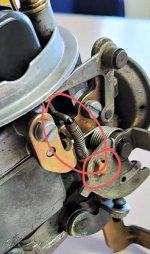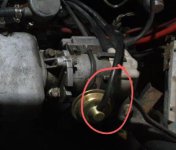Hello all
What could cause VERY LONG starting on cold engine? 999c 1.0 Fire engine
It takes almost 50 seconds of turning the starter, until the car runs.
When it runs, everything is good.
When I turn off the engine, and come back in 6-7 hours of work, it takes another 50 seconds of starting.
On hot it starts immediately.
I have inserted an electrical fuel pump on the same line but it won't help.
Fuel lines are new, without cracks. Carburator was rebuilt last year.
What could cause VERY LONG starting on cold engine? 999c 1.0 Fire engine
It takes almost 50 seconds of turning the starter, until the car runs.
When it runs, everything is good.
When I turn off the engine, and come back in 6-7 hours of work, it takes another 50 seconds of starting.
On hot it starts immediately.
I have inserted an electrical fuel pump on the same line but it won't help.
Fuel lines are new, without cracks. Carburator was rebuilt last year.



